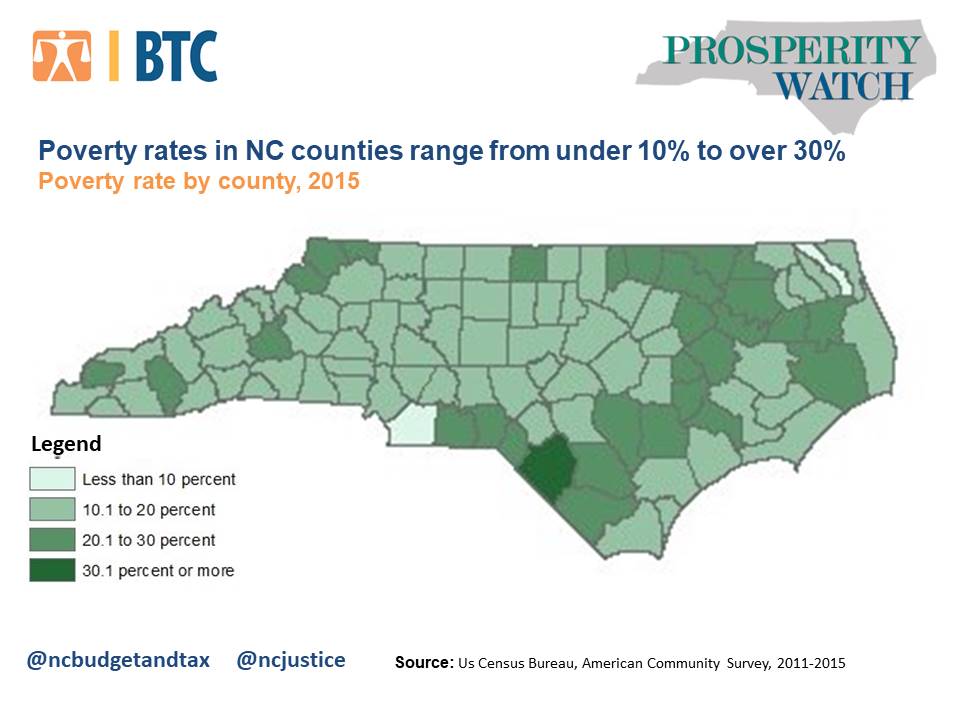Prosperity Watch (Issue 73, No. 1)
May 1, 2017
In 2015, 16.4 percent of North Carolinians lived below the federal poverty level, just $24,500 for a family of four. For children, that rate was much higher, with more than 23 percent experiencing poverty. The states median wage is $15.91 per hour, a 15 cent decrease since the recovery began after adjusting for inflation. And while the value of wages has decreased, expenses such as rent have gone up. Today, rent is unaffordable for more than 50 percent of renters in the state. While there is cause for concern, there are also areas where North Carolina is seeing small improvements. The percentage of adults with college degrees has seen a slight increase in the past year up to 28.4 percent. Additionally, North Carolinians have benefited from the national increase in access to healthcare. In 2015, 93,500 more North Carolinians were insured than they were the previous year.
North Carolina is an extremely diverse state, and as a result, local communities have experienced the Great Recession and the recovery from it differently. By looking at each one of North Carolina’s 100 counties separately, the County Snapshots paint a clear picture showing us what parts of our state are being left behind.
The county-level disparities we observe are not by accident. Barriers such as a lack of access to jobs that pay a living wage, inequitable public education funding models, and a lack of access to preventative health care have barred particular communities from sharing in state wide and national growth. Overtime, past and present public policies and decisions, such as housing and workplace discrimination, have prevented communities from accessing important anti-poverty tools like jobs, wealth, and quality education.
In counties like Camden and Union, the poverty rate is below 10 percent, while in places like Scotland and Robeson counties, nearly one-third of residents experience poverty.
The persistence of difference in the experience of opportunity across the state limits the possibilities for sustained and strong economic growth as a state. Indeed, researchers have shown that for communities to thrive, it is critical to ensure the needs of all are being met and connections to opportunity are strong for each North Carolinian.
 Justice Circle
Justice Circle 
